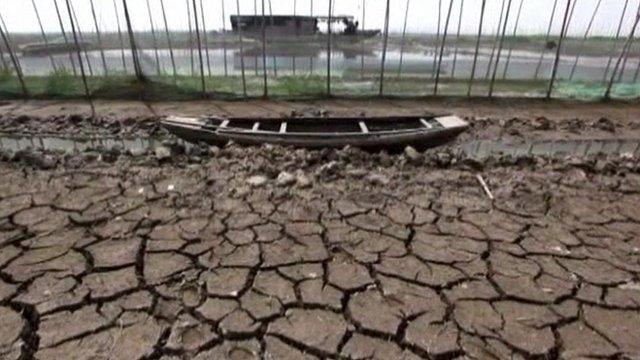Five US states where climate change could be disastrous
- Published

Climate change is expected to increase the frequency of extreme weather events around the world. One US group has given the 50 states a report card, ranking the risk of potential disasters and long-term dangerous changes.
Most US states are well-prepared for current natural disasters, but across the country, states have done little to factor in how climate change will increase or change risks, external - from wildfire, extreme heat, inland and coastal flooding and drought.
"Many of these states haven't even assessed their vulnerability," with climate change explicitly in mind, says Richard Wiles, senior vice president of Climate Central, a climate change research group. The organisation developed a "report card" of climate change resilience for each state with the help of ICF international, a consulting firm.
Future planning often involves more difficult infrastructure changes, Wiles says, like moving roads at serious risk of being underwater in the future.
But very few states incorporate this into their long-term planning documents, which often set where money will be invested.
"These climate threats aren't sneaking up on anybody," Wiles says.
The response from states has been mixed. In a press conference on Friday, a collection of Miami-area counties said they agreed with their state's overall grade, but said the report ignored the work of the state's water management districts as well as a compact of south Florida counties working to adapt to higher sea levels, the Sun Sentinel reported, external.
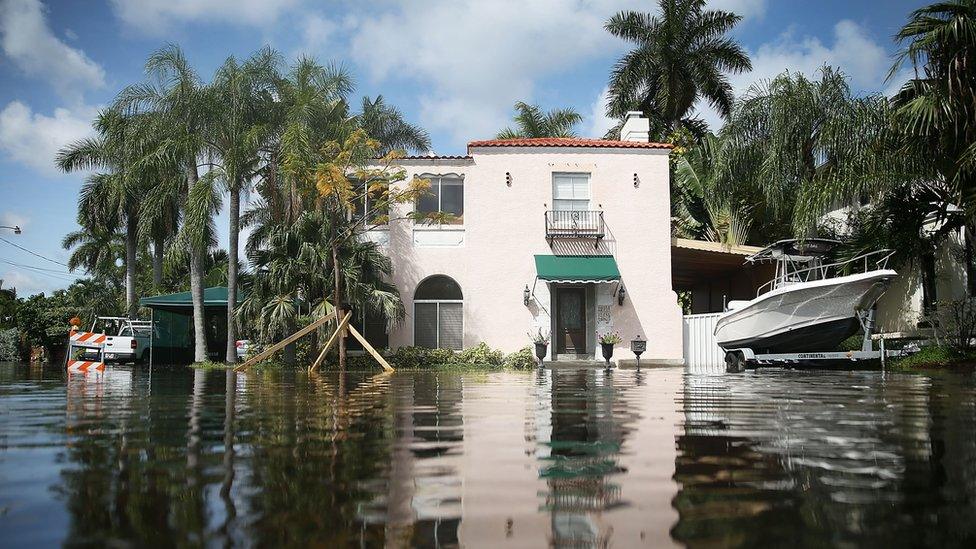
A home is seen surrounded by flood water caused by the combination of the lunar orbit which caused seasonal high tides and what many believe is the rising sea levels due to climate change in Fort Lauderdale, Florida
"One of the challenges of doing a report card on climate preparedness is that states are likely to be doing additional things that can be put into the climate change adaptation bucket, but are not being described that way," says Erika Spanger-Siegfried of the Union of Concerned Scientists' Climate and Energy programme.
"We need to be having conversations about climate risk," she says. "I think [a report card] has the ability to advance the conversation - especially if it's done periodically."
Climate Central gave five states failing grades, external. The analysis of the changing threats is based on a projected global temperature rise if no major action is taken to limit carbon emissions. For state actions, researchers combined published policies and programmes with interviews with state employees working on these issues.

Mississippi
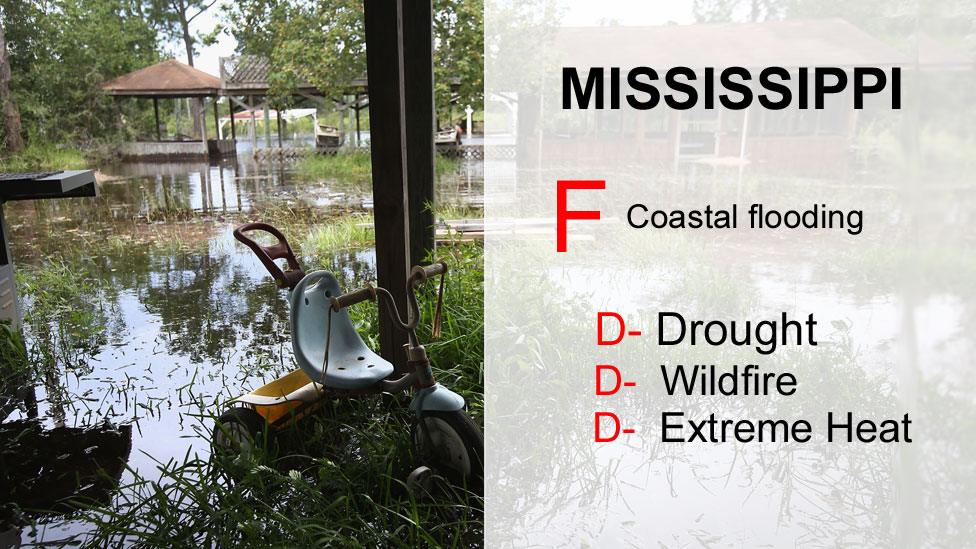
Mississippi already averages 25 days a year of dangerous heat and 1.7 million people potentially threatened by wildfire, according to the report. But the state has taken no climate-change driven action. By 2050, the state is projected to have 100 dangerous heat days a year - third in the entire nation - and 60 days of high wildfire potential.
The state currently tracks the impact of coastal flooding, but there are no plans or policies in place to deal with climate change risks.
Mississippi's emergency management department told the BBC they were proud that the report recognised "our current strong State Mitigation Plan, State Comprehensive Emergency Management Plan and other steps that address current risk.
"All Mississippi agencies can and will adapt to any changes and continue to be strong in the future," a spokesman said in a email.

Missouri
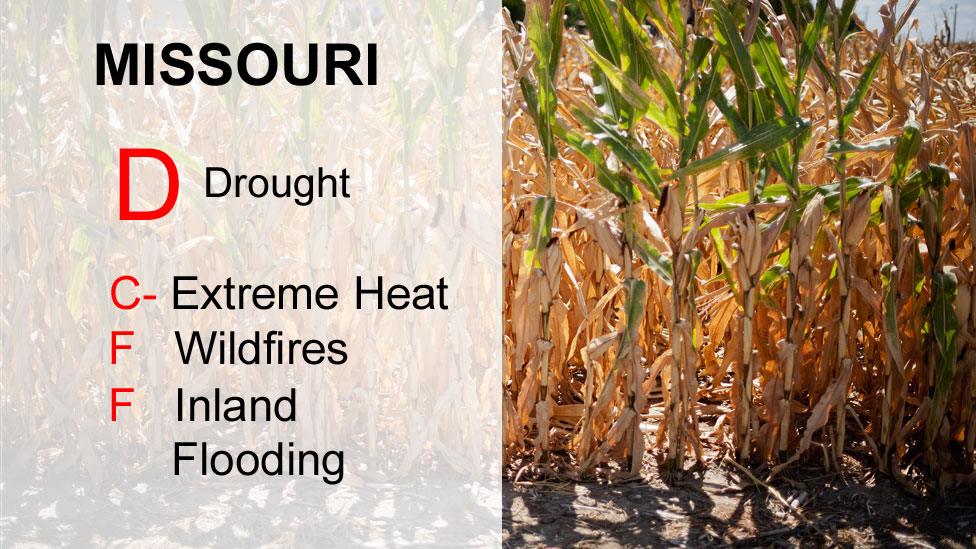
Missouri's risks over the next 40 years will increase significantly, especially from heat, according to the report. The state is estimated to go from 15 dangerous heat days a year to 60 days a year by 2050.
The state has started tracking the impact of extreme heat on water and health, but has made no future plans for such an increase. It also faces increasing threats from drought, wildfire and inland flooding.
A spokesman for the state's emergency management agency cited Missouri's advanced mitigation plan, heat wave action plan and noted the state has led the US in the number of home buyouts in flood-affected areas, effectively resettling neighbourhoods to higher ground.

Texas
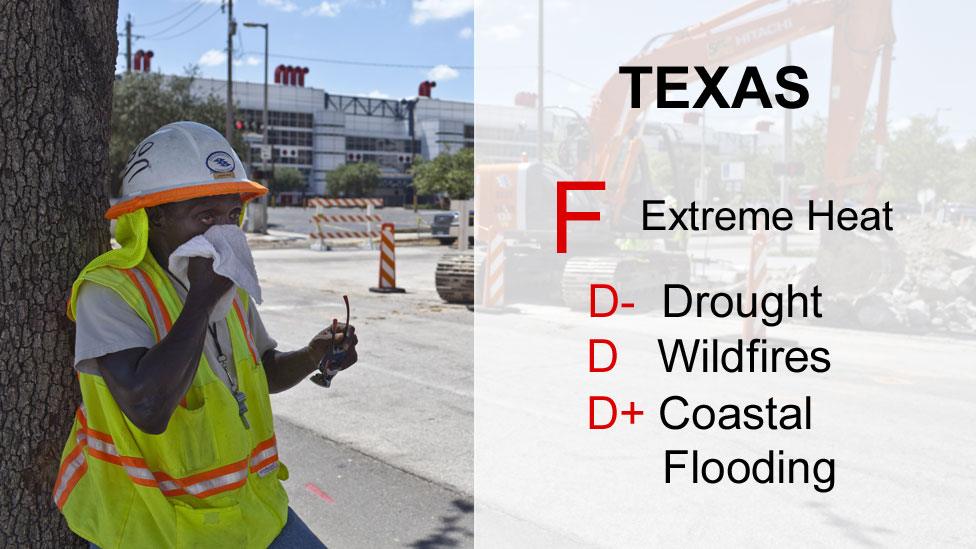
Texas is a case of extremes. In Climate Central's analysis, it's the state expected to have the greatest threat from drought and wildfires by 2050 and the second-greatest threat from extreme heat - a total of 115 dangerous heat days per year.
Yet the state does not include heat or drought in its current emergency management plan, never mind future planning.
In a statement, the Texas department of public safety said they participate "in a yearly threat and risk assessment to ensure all likely hazards are included in preparedness efforts for the state".


Arkansas
In 2008, an Arkansas report briefly mentioned how the state's climate could change as a result of global warning, but very little on the issue has been done since then.
The state ranks third in the report for future inland flooding risk, with more than 200,000 people threatened. Officials have made no future plans to deal with events like heavy rain.
Heat wave days are projected to quadruple by 2050, according to Climate Central's analysis.

Nevada
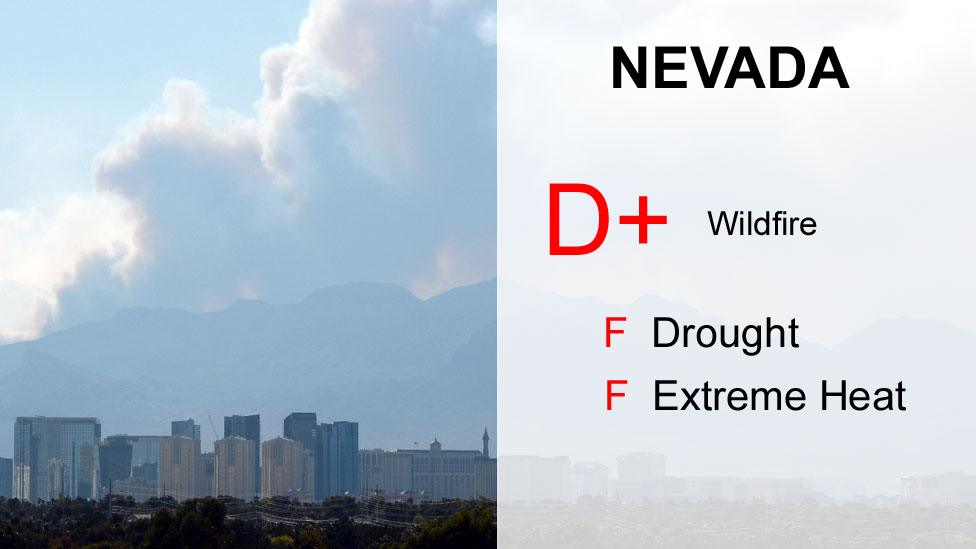
Nevada is doing less to deal with extreme heat in the present - despite an already hot climate - because it identifies it as a "low risk".
And while the state has said wildfires may increase in the future, they've not planned for any, or even done a vulnerability assessment.
By 2050, about 45% of the state's population will live in places where housing development and wild lands mix - increasing risk for damage and loss of life due to wildfire.

Better preparation
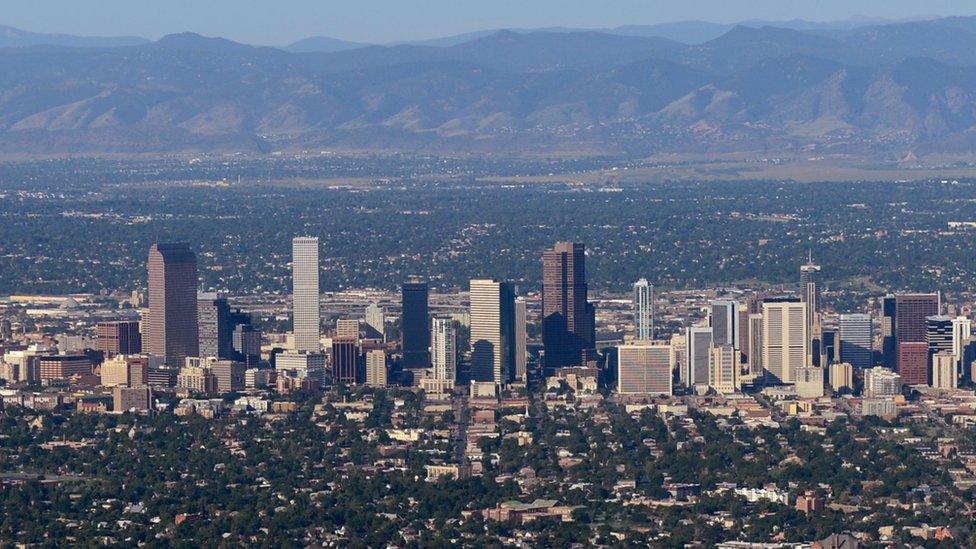
Colorado is better prepared for drought - but what about wildfires?
Not all heavily threatened states have received bad grades. California, currently in the middle of a multi-year historic drought, gained an "A" score. It's gone beyond planning for a changing climate and started changing its own policies for all five threats.
"It's hard not to be impressed with California," says Kathy Jacobs, director of Center for Climate Adaptation Science at the University of Arizona. She says one of the reasons the state has been able to take action is because the state has established a tax on carbon.
The report does not take into consideration well-prepared individual cities or regions within the poorly performing states, nor private initiatives. Some additional highlights:
Louisiana has an enormous coastal flooding threat under the report's analysis - 1.2 million people living in a 100-year coastal floodplain by 2050 - but is fairly well-prepared. Florida, with its lengthy coastline (and 4.6 million people at risk), gets a F for just an average level of preparedness in the face of rising seas.
Colorado is among the top states in the country threatened by drought - 6th in the nation by 2050. That's a worse position than Texas is in today. But the state's adaption plan covers drought - and a recent state water availability study incorporated climate projections. The state was not rated for wildfire risk because its existing and future threats were relatively lower than half of all states in the analysis, despite a number of high-profile wildfires in the states in recent years.
North Carolina has passed a law, external limiting how state scientists can measure climate change risks But the state gets an overall grade of B+. Why? Because its current preparation goes above and beyond on all five risks, and it has begun doing some work on future risks.
The federal emergency management agency will now require new mitigation plans to take climate change into consideration, so many of these grades may change if Climate Central chooses to update the analysis in the coming years.

UN climate conference 30 Nov - 11 Dec 2015

COP 21 - the 21st session of the Conference of the Parties - will see more than 190 nations gather in Paris to discuss a possible new global agreement on climate change, aimed at reducing greenhouse gas emissions to avoid the threat of dangerous warming due to human activities.
Explained: What is climate change?
In video: Why does the Paris conference matter?
Analysis: Latest from BBC environment correspondent Matt McGrath
More: BBC News climate change special report

- Published23 November 2015
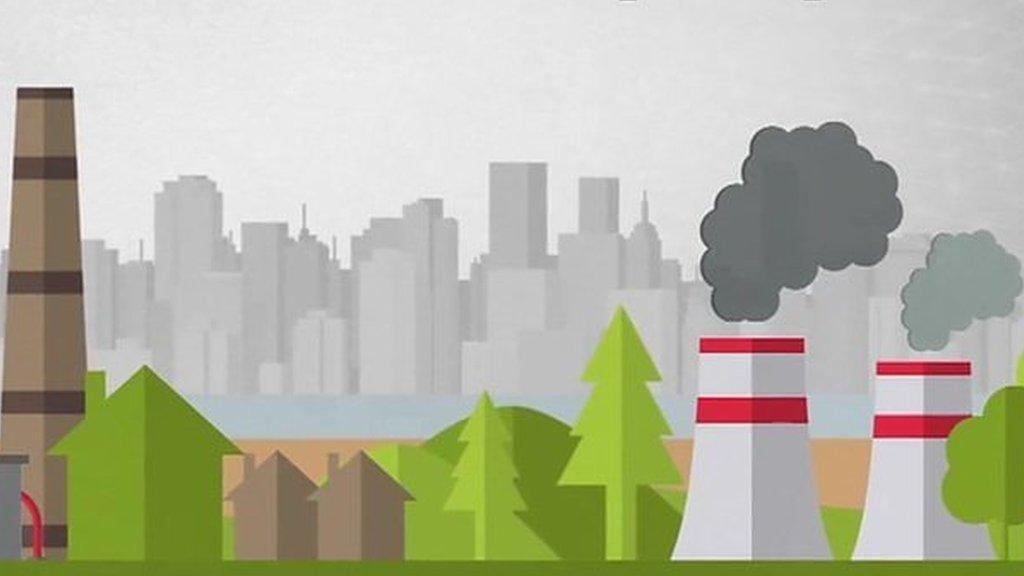
- Published7 May 2014
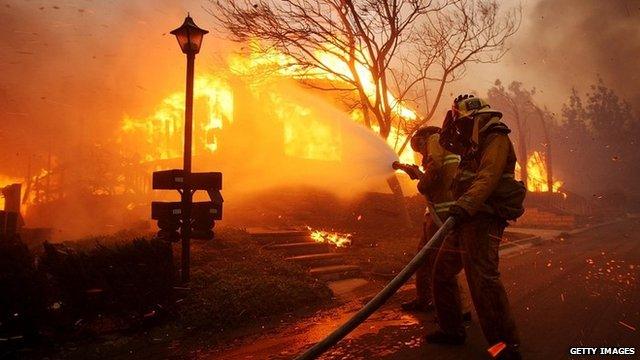
- Published27 November 2014

- Published22 March 2015
